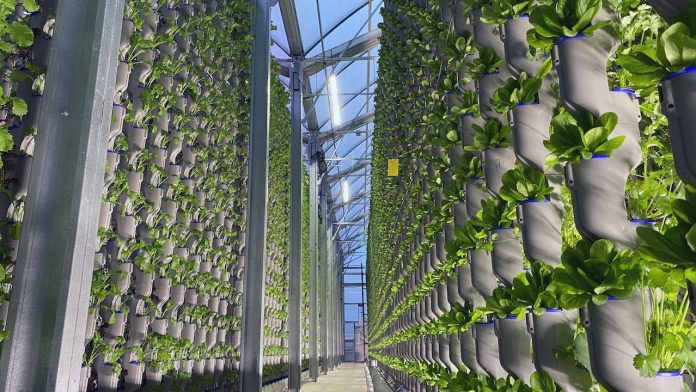In recent years, hydroponics has gained significant attention as a groundbreaking method of food production. As the world grapples with challenges like climate change, water scarcity, and shrinking agricultural land, hydroponics is emerging as a powerful alternative to traditional farming. By growing plants without soil and in controlled environments, this innovative system is transforming modern agriculture practices and offering new opportunities for sustainable farming.
The Basics of Hydroponics
Hydroponics is a method of growing plants by supplying their roots with a nutrient-rich water solution, eliminating the need for soil. In these systems, plants receive precise amounts of water, nutrients, and oxygen, allowing them to thrive in optimal conditions. Hydroponic farms can be set up in various locations, including greenhouses, vertical farms, and even indoors, allowing for year-round production in environments otherwise unsuitable for agriculture.
Some common hydroponic systems include:
- Wick System: The simplest system, where a wick draws nutrients from a reservoir to the plant roots.
- Flood and Drain (Ebb and Flow): The roots are periodically flooded with the nutrient solution, which is then drained back into the reservoir.
- Aeroponics: Plants are suspended in the air, and their roots are misted with nutrient-rich water, maximizing oxygen intake.
Why Hydroponics Is Changing Agriculture
1. Optimized Resource Use
In traditional agriculture, water and nutrient delivery is often inefficient, with much of it lost to runoff or evaporation. Hydroponics drastically reduces water usage by recycling the water within a closed system. This method is especially crucial in regions facing water shortages, as it uses up to 90% less water compared to soil-based farming.
Moreover, hydroponic systems can carefully manage nutrient distribution, ensuring that plants receive only what they need. This reduces waste and prevents the over-application of fertilizers, which can harm the environment.
2. Higher Crop Yields
By creating an optimal growing environment, hydroponics enables faster and more robust plant growth. The precise control over factors such as light, temperature, and nutrients ensures that plants can grow continuously, regardless of seasonal changes. This leads to multiple harvests in a year, maximizing output and ensuring a stable food supply even in adverse conditions.
3. Reducing the Need for Arable Land
With increasing urbanization and decreasing farmland, hydroponics provides a solution by allowing crops to be grown in compact, urban settings. Vertical farming systems, where plants are stacked in layers, significantly reduce the land footprint required for farming. This makes hydroponics an ideal approach for cities where agricultural space is limited, potentially bringing fresh produce closer to consumers.
4. Minimizing Pesticide Use
In a controlled environment like hydroponics, pests and diseases are less of a concern. Without soil to harbor pests, and with the ability to regulate the growing conditions, there is often no need for harmful chemical pesticides. This results in cleaner, healthier produce, while reducing the environmental and health risks associated with conventional pesticide use.
5. Supporting Climate Resilience
Climate change poses a significant threat to traditional farming practices, with extreme weather events, droughts, and changing growing seasons affecting crop production. Hydroponics, however, operates in protected environments, shielding crops from these external factors. The ability to grow food indoors, in greenhouses, or in vertical farms ensures consistent production, regardless of outdoor conditions.
The Impact of Hydroponics on Modern Farming
1. Urban Farming and Food Security
Hydroponics is becoming an integral part of urban farming initiatives, offering a solution to food security in densely populated areas. With more people living in cities, the need for local, fresh produce is growing. Hydroponic systems can be installed in urban centers, reducing the distance between farms and consumers. This minimizes the carbon footprint associated with food transportation and ensures that urban populations have access to fresh, locally grown crops.
2. Sustainable Commercial Agriculture
Large-scale hydroponic farms are being developed worldwide to meet the demand for sustainable food production. Companies are investing in high-tech hydroponic facilities, using advanced technologies such as automation, artificial intelligence, and renewable energy to further enhance efficiency. These commercial ventures demonstrate that hydroponics can be a viable and profitable farming method, capable of competing with traditional agriculture on a larger scale.
3. Innovations in Crop Variety
While hydroponics has been traditionally associated with leafy greens like lettuce and spinach, advancements in technology are allowing for a broader range of crops to be grown in these systems. Hydroponic techniques are now being applied to fruit-bearing plants like tomatoes, strawberries, and cucumbers, as well as high-demand crops such as herbs and spices. This versatility increases the potential for hydroponics to contribute significantly to the global food supply.
Challenges to Widespread Adoption
1. Initial Setup Costs
Despite its many benefits, hydroponic farming requires a significant initial investment. Building and equipping a hydroponic system, especially a large-scale commercial one, can be costly. However, as the technology becomes more widespread and innovations reduce costs, the barriers to entry are likely to decrease, making hydroponics more accessible to farmers around the world.
2. Energy Consumption
Maintaining controlled environments, particularly in indoor and vertical farming systems, requires a considerable amount of energy. Lighting, temperature control, and automation all contribute to the high energy demands of hydroponics. Incorporating renewable energy sources, such as solar and wind power, can help mitigate this challenge and make hydroponic farming more energy-efficient.
3. Knowledge and Training
Hydroponic farming is highly technical, requiring a deep understanding of plant biology, nutrient management, and system maintenance. Farmers must be trained in these specialized skills, which may initially slow down adoption. However, as more educational resources and training programs become available, this knowledge gap will likely diminish.
Conclusion
Hydroponics is revolutionizing modern agriculture practices by offering a sustainable, efficient, and high-yielding alternative to traditional farming. Its ability to conserve water, reduce land use, and produce pesticide-free crops makes it a critical tool in addressing global food security and environmental challenges. As technology continues to advance, and the demand for sustainable agriculture grows, hydroponics is set to play a pivotal role in shaping the future of farming.








